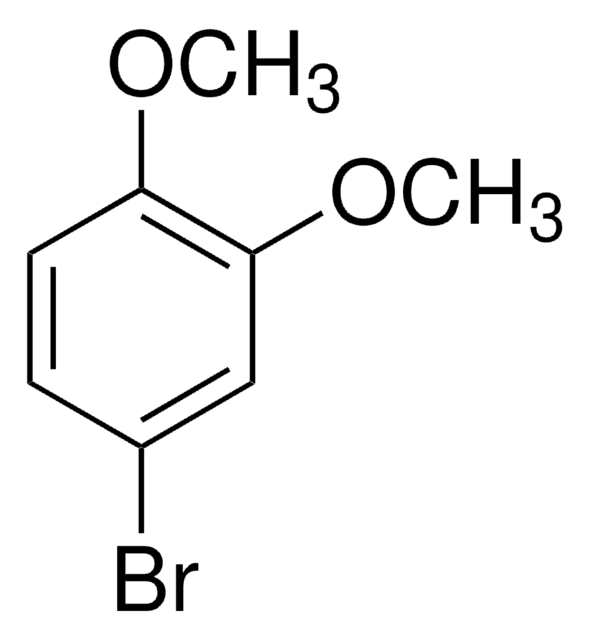148520
4-Chlorocatechol
97%
Iniciar sesiónpara Ver la Fijación de precios por contrato y de la organización
About This Item
Fórmula lineal:
ClC6H3(OH)2
Número de CAS:
Peso molecular:
144.56
EC Number:
MDL number:
UNSPSC Code:
12352100
PubChem Substance ID:
NACRES:
NA.22
Productos recomendados
Quality Level
assay
97%
mp
90-94 °C (lit.)
functional group
chloro
SMILES string
Oc1ccc(Cl)cc1O
InChI
1S/C6H5ClO2/c7-4-1-2-5(8)6(9)3-4/h1-3,8-9H
InChI key
WWOBYPKUYODHDG-UHFFFAOYSA-N
Categorías relacionadas
General description
4-chlorocatechol was a major degradation product of 4-chloro-2-aminophenol (4C2AP). The degradation of 4-chlorocatechol was catalyzed by cphA-I enzyme.
signalword
Danger
hcodes
Hazard Classifications
Skin Corr. 1B
Storage Class
8A - Combustible corrosive hazardous materials
wgk_germany
WGK 3
flash_point_f
Not applicable
flash_point_c
Not applicable
ppe
Eyeshields, Faceshields, Gloves, type P3 (EN 143) respirator cartridges
Elija entre una de las versiones más recientes:
¿Ya tiene este producto?
Encuentre la documentación para los productos que ha comprado recientemente en la Biblioteca de documentos.
Los clientes también vieron
Y Samet et al.
Journal of hazardous materials, 138(3), 614-619 (2006-07-18)
Electrochemical oxidation of 4-chloroguaiacol (4-CG) at Nb/PbO(2) anodes was studied under different experimental conditions such as initial concentration of substrate, electrolysis time, temperature and pH. We measured the concentrations of 4-chlorocatechol (4-CC), 2-methoxyhydroquinone (2-MHQ), maleic acid (MA) and carbon dioxide
X Guan et al.
Analytical chemistry, 72(11), 2423-2427 (2000-06-17)
A sensitive and selective sensing system for chlorocatechols (3-chlorocatechol and 4-chlorocatechol) was developed based on Pseudomonas putida bacteria harboring the plasmid pSMM50R-B'. In this plasmid, the regulatory protein of the clc operon, ClcR, controls the expression of the reporter enzyme
A Farrell et al.
Journal of industrial microbiology & biotechnology, 28(6), 316-324 (2002-05-29)
A bacterium, CP1, identified as Pseudomonas putida strain, was investigated for its ability to grow on and degrade mono-chlorophenols and phenols as sole carbon sources in aerobic shaking batch culture. The organism degraded up to 1.56 mM 2- and 3-chlorophenol
Pankaj Kumar Arora et al.
Environmental science and pollution research international, 21(3), 2298-2304 (2013-09-24)
Burkholderia sp. RKJ 800 utilized 4-chloro-2-aminophenol (4C2AP) as the sole carbon and energy source and degraded it with release of chloride and ammonium ions. The metabolic pathway of degradation of 4C2AP was studied and a novel intermediate, 4-chlorocatechol was identified
A Farrell et al.
Biodegradation, 10(5), 353-362 (2000-06-28)
A mixed microbial community, specially designed to degrade a wide range of substituted aromatic compounds, was examined for its ability to degrade mono-chlorophenols as sole carbon source in aerobic batch cultures. The mixed culture degraded 2-, 3-, and 4-chlorophenol (1.56
Nuestro equipo de científicos tiene experiencia en todas las áreas de investigación: Ciencias de la vida, Ciencia de los materiales, Síntesis química, Cromatografía, Analítica y muchas otras.
Póngase en contacto con el Servicio técnico












